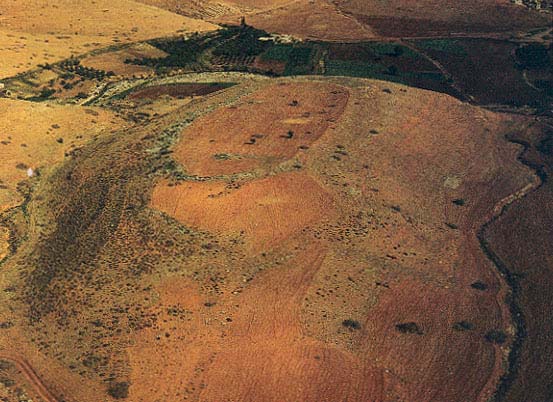Image Details

Courtesy Adam Zertal
Possibly Biblical Gilgal. The site enclosed by a wall on this long, oval hill overlooking the Wadi Far’ah is known to the Arabs as el ’Unuq (the necklace). Zertal suggests that it may be the Gilgal mentioned in Deuteronomy 11:30 as a reference point for the location of Mt. Ebal and Mt. Gerizim. Apparently unnoticed by archaeologists until examined by the author in 1985, the site features a nearly 6-foot-wide wall of unworked stones enclosing an area measuring 800 feet by 500 feet. A possible inner wall divides the enclosure into a one-third portion in the northern (far) end and a two-thirds portion in the southern (near) end. One of the site’s most intriguing features, which the author hopes to excavate some day, is a stone pile positioned on the long axis in the southern portion. The ribbon of greenery behind the hill marks the course of the fertile Wadi Far’ah, which links the sites of Shechem, Mt. Ebal and Tell Far’ah North (Tirzah) to the Jordan River.
The name “Gilgal” was not originally a specific place-name, but rather a term for a fortified camp. El ’Unuq appears to be just that. Although the site lacks permanent living quarters, it contains considerable pottery, the earliest of which dates to the 13th and 12th centuries B.C.E. and closely resembles pottery from the altar the author excavated on Mt. Ebal. In addition, the monumental size of el ’Unuq’s enclosure wall suggests a fortification. This evidence supports the identification of el ’Unuq as a fortified camp from the early Iron I period, the period of Israel’s earliest history in Canaan.
